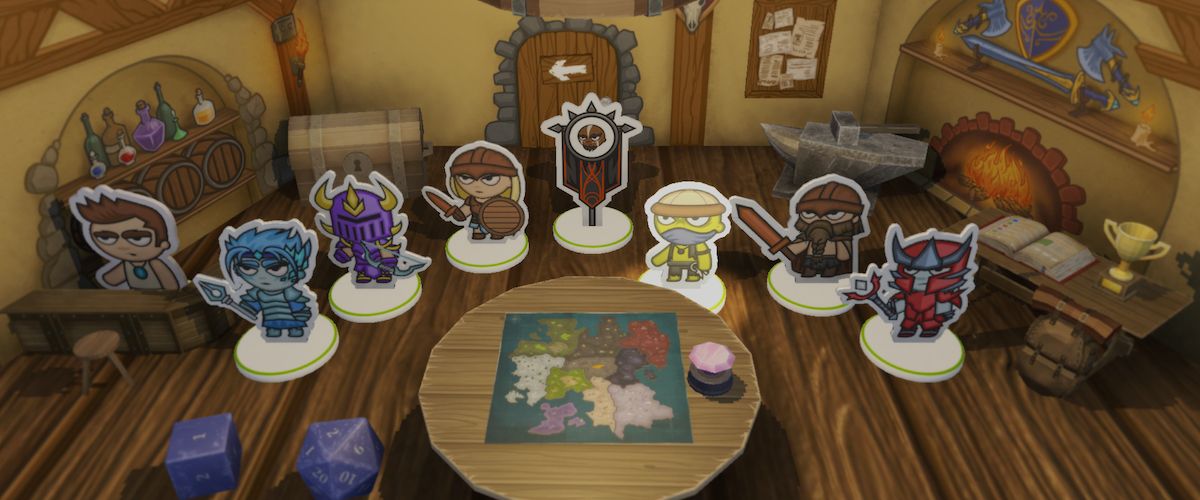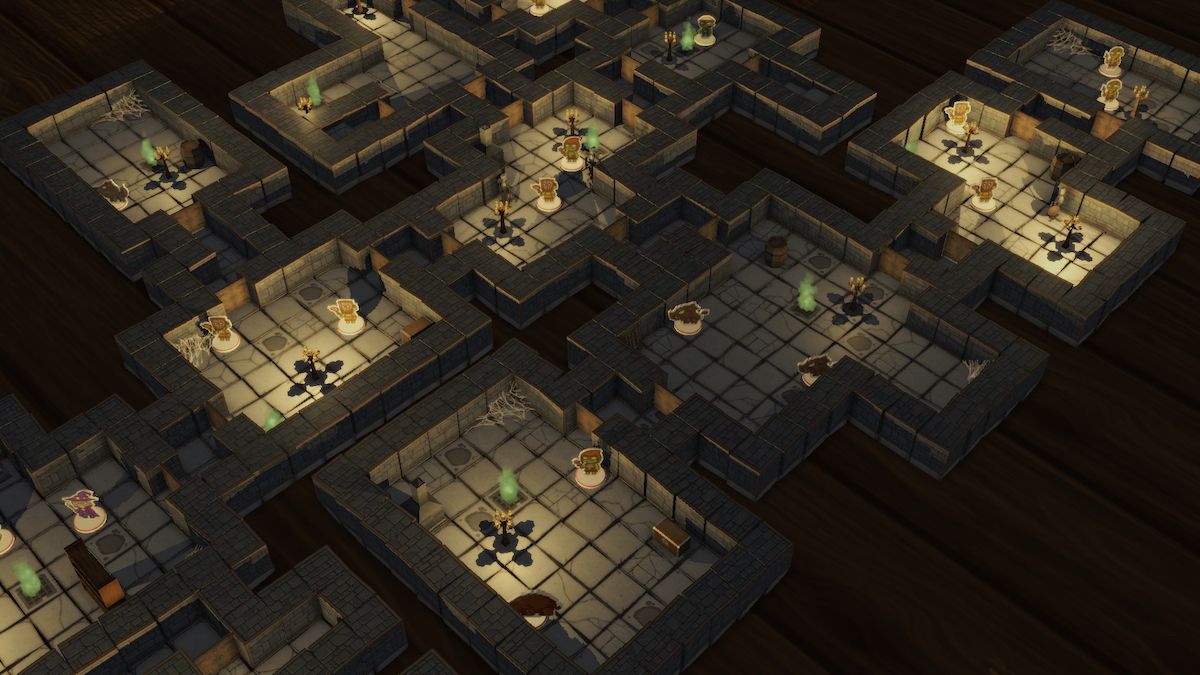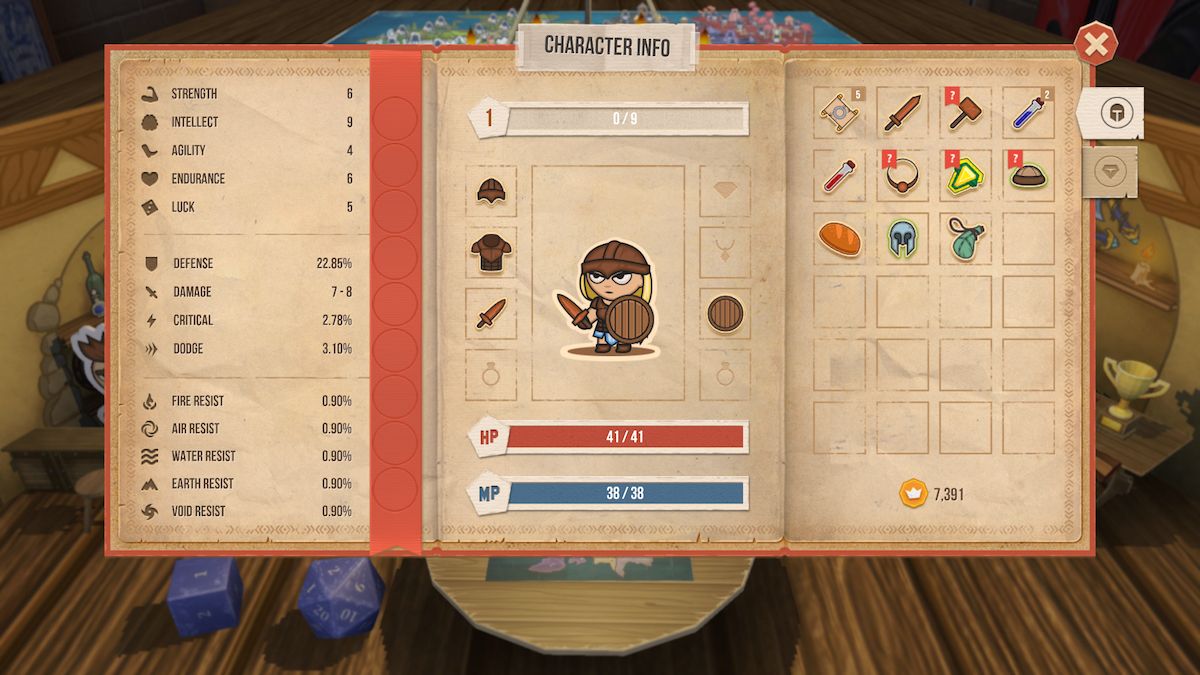Maybe it's the pieced-together dungeons, as if someone has painstakingly spent hours crafting a setting out of little textile cubes; maybe it's the way rooms in said dungeons fall and tumble into place upon entering; maybe it's the half-interested looks laid out in hand-drawn expression upon each of the game's 2D paper-craft characters like at any moment this tale of adventure and chivalry could spill into satire at any moment; maybe it's the sense that also at anytime some ominous forth-wall breaking entity, taking the role of the dungeon-keeper, will let his presence be known (in more ways than one) by flipping the entire table over and storming off in a fit of rage -- bellowed cries of "CHEATER!!" echoing through the living room or kitchen. Whatever the reason, developer Soaphog's illustrative RPG Rezrog is as close as you'll possibly get to a Tabletop RPG without ever actually playing one.
But Soaphog's deliberate look and feel of the Tabletop structure is impressive not solely because of the aesthetic it ends up generating all-round. Above all else -- beneath the hand-drawn style of the overworld/characters or the overhead isometric view as if one is literally controlling these inanimate slits of paper masquerading as characters -- Rezrog is actually a rather challenging and deep RPG that demands of its players to break out from the confines of character-build favoritism for example, to conquer the one hundred procedurally-generated dungeons that make up the game's single-player campaign with most if not all the character builds offered up on show. It's a game that aims to perhaps mislead with its simplicity and often innocently-crafted visuals, for good reason, perhaps as a means to demonstrate the potentially complex and calculated affairs that can often go down in a real-life Tabletop game of this caliber, if not exact presentation.
While most RPGs allow players to get used to one, possibly two, types of build -- upgrading and leveling them up at every turn while the other types lay untouched and unused -- Rezrog is a game that is deliberately structured through its enemy variety and accompanying offensive capabilities, it's rare that players will get used to or otherwise confine in the same character for long stretches of the game. Character types/builds, as you might have guessed, range from sword-wielding knights and those wielding long-range bows, to mages and tanks. Each with their own distinct strengths/weaknesses/starting attributes, upgradeable through both the standard leveling up system as well as an assortment of apparel that can be found during one's ventures in a particular dungeon.
Within each of these dungeons, gameplay flows naturally in real-time -- players picking the amount of spaces one's character should move to proceed through each room -- until an enemy (or multiple enemies) is encountered in a certain room, at which point the game reverts from real-time to turn-based combat. During this period, neither you nor the enemies in questions can leave the room (no one aside from resurrected/magic-spawned entities able to enter said space) meaning that the player can't progress until all threats have been completely cleared. The objective in each dungeon ranges from simply reaching a particular chamber where a prisoner is kept, to destroying crystals, defeating all enemies in the vacinity, activating certain contraptions like levers, finding a certain amount of broken key pieces. All of which, of course, is wrapped up by finally confronting the dungeon boss at the climax along with a few stronger sub-boss types encountered at random points. Succeed and, as you might expect, the game continues on by unlocking the next dungeon.
Fail however and the character previously used -- and subsequently depleted of all health -- then becomes one of the prisoners in that dungeon, meaning a secondary [optional] objective opens up to free the former player-character. Not only does this open up an entirely new avenue of risk when planning for the long-run, but it reflects again the player's need to carefully consider how one spends level-up points in the event, worse case scenario, one particularly over-reliant build -- numerous points stronger/higher than the others -- finds themselves captive. Naturally, enemy types will of course mean players will constantly have to switch, even experiment with the abilities and traits on offer.
While Rezrog might not have some catchy gimmick to deviate its actual combat mechanics from the traditional turn-based delivery, or some elaborate level design with its dungeons, the thing that sticks out the most is indeed the game's realization that RPGs are as much about avoiding unnecessary losses/casualties as they are maximizing the very losses on the enemy's side in order to [hopefully] reap a greater reward. And bound together in its pleasantly charming tabletop-styled design, Rezrog may well be putting great emphasis on replicating that same aesthetic with a sub-genre that, in recent years, has exploded in popularity. All that does is significantly add to a game that, without its art-style, is cleverly compact but concise in its delivery of gameplay. For someone who's seldom touched a tabletop game, Rezrog may well be the best reflection of why such a sub-genre has sustained for so long.



